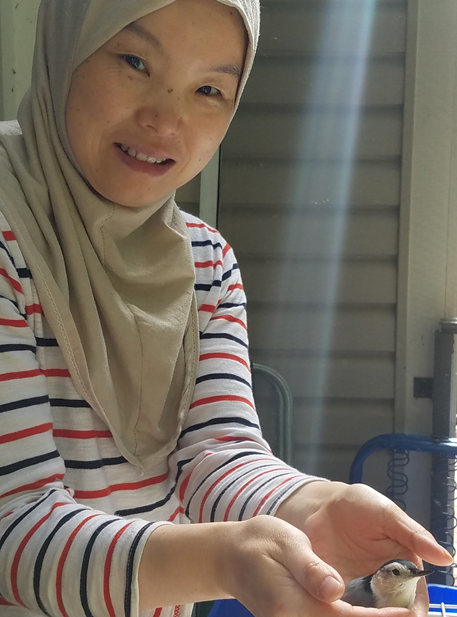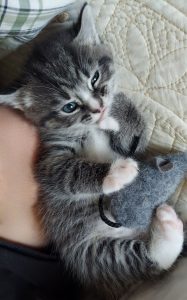- Who We Are
- Updates & News
- Standards
- Software Tools
- Network Studies
- Community Forums
- Education
- New To OHDSI?
- Community Calls
- Past Events
- Workgroups
- Tutorials
- 2025 ‘Our Journey’ Annual Report
- Current Events
- Support & Sponsorship
- 2025 Global Symposium
- 2025 APAC Symposium
- 2026 Global Symposium
- Github
- YouTube
- X/Twitter
- Newsletters
Collaborator Spotlight: Asiyah Lin
Dr. Asiyah Lin is a passionate community builder, thinker, mentor, and a senior data scientist/ontologist with a diverse interdisciplinary background in medicine, immunology, molecular biology, medical informatics, and e-commerce entrepreneurship. She studied Pediatrics and Molecular Immunology from Tongji Medical College at Wuhan, China. She obtained her PhD degree from the Kobe University Medical School in Kobe, Japan. She completed her post-doc training with Dr. Yongqun “Oliver” He’s lab in University of Michigan. After that, she started her journey with the US federal agencies at the FDA and NIH. She is now working as a consultant as well as an independent contractor to serve the NIH and other organizations for data science strategies and ontology development.
Asiyah initiated the Medical Device WG together with Vojtech Huser in the fall of 2019 with a goal of growing a community for all people who are interested in using and expanding OHDSI tools and standards for medical device related research.
Asiyah discusses her career journey, some of the exciting breakthroughs in the area of biomedical ontology, the collaboration between OHDSI and the FDA, and more in the latest edition of the Collaborator Spotlight.
You originally studied medicine, so what first inspired your interest in data science and informatics?

My mom is a retired librarian. When I was in high school, I spent my summers reading the books from A to Z in her library. Although I studied medicine, I’ve been always interested in learning about computers and informatics. I went to computer training classes outside of school to learn. I was working in a dot com startup company in China after I finished my master’s degree in Immunology. This startup company accelerated my understanding of the web, internet, and business. I am a curious, motivated self-learner and doer. I am always curious about learning new skills and technologies. I started with self-learned bioinformatics during my master’s years in China. After the start-up experience, I then joined the PhD program in Japan for medical informatics. Along with years of working experience, the interest just naturally grew while the technology is advancing. However, I have a passion in getting data ready for AI/ML, because we spent 60-80% of the time preparing data for the next step. If we can reduce that time, how wonderful will the science and research be?
As a biomedical ontologist, what have been some recent exciting breakthroughs to help connect different stakeholders to facilitate research?
For the biomedical ontology domain, I think the exciting things happening is around the Knowledge Graph (KG). Graph data has been around for quite some time, but KG started to attract attention especially in the recent 2-3 years in all domains. Some exciting research front is the KG and ontology based Machine Learning and neuro-symbolic AI. Neuro-symbolic AI combines knowledge-driven, symbolic AI with data-driven machine learning approaches. I believe those technologies will bring our research to a new level that we have never seen.
How did you first get connected with OHDSI, and why do you think OHDSI has been able to make such an impact in a relatively short amount of time?
I first heard about OHDSI was in 2016 when I participated in the OHDSI annual symposium in DC. At the time I was very impressed by the style of the leadership and the spirit of the community. There is something unique about the OHDSI organization and how they support the community, which motivates the community to work as a whole. We know that with greater diversity and inclusiveness, there is greater creativity and innovation. The whole is always greater and bigger than the total sum of individuals. I think that’s the key why OHDSI has been able to make an impact.
Can you discuss how OMOP/OHDSI has impacted your work with the NIH?
I met a lot of people from the NIH or outside of the NIH who are part of the OHDSI community. A lot of programs are using OMOP. In my direct day-to-day work, I don’t use OMOP. But understanding how OMOP works and OHDSI tools is definitely a valuable knowledge for data science strategic planning.
You co-lead the Medical Devices workgroup in OHDSI. What excites you about the device research possible with OMOP vocabularies?
The reason I started the Medical Device WorkGroup in OHDSI is because the medical device research is a smaller community, yet very complex. We want to grow the EHR and medical device safety community within the OHDSI community at large. The long term goal of the Medical Device WG is to fill the gap of OMOP vocabularies and OMOP extensions to capture devices features in a standardized way. This will accelerate device-related research especially by using EHR data. The Medical Device WG is also an interface connecting with other medical device groups, such as the UDI community, the FDA NESTcc partners, and others. We are still a small group, but we are looking forward to grow bigger together with OHDSI community.
 You spent more than five years with the FDA, so how do you view OHDSI’s role in assisting regulatory industries?
You spent more than five years with the FDA, so how do you view OHDSI’s role in assisting regulatory industries?At the FDA, I spent 8 months in the Center for Drug Evaluation and Research (CDER), and 5 years in the Center for Devices and Radiological Heath (CDRH). I have been exposed to a lot of activities using Real World Data/Evidence to support pre-market or post-market decision making. OHDSI supports the Center for Biologics Evaluation and Research (CBER)’s BEST program, a RWE program for biologics evaluation. As an open-science community, OHDSI provides well-maintained and documented open source tools, standards, resources, and community support for reliable RWE generation and evaluation. I think OHDSI plays an important role for regulatory industries especially by advancing the strong evidence to support comparative effectiveness research.
What are some of your hobbies, and what is one interesting thing that most community members might not know about you?
I often changes my hobbies, because I like to try new things. I kept my interest in green tea, yoga, sci-fi movies, indoor plants, and I love cats especially kittens. One interesting thing that not all of the members know about me is that I rescue cats and I have a YouTube Channel for those cats I rescued or fostered. Among all my other dreams, I hope I can open a modern concept shelter for cats and kittens one day. 😀
